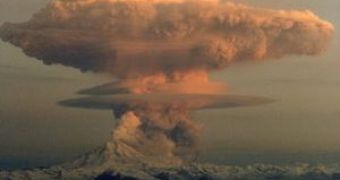The power of the volcanic blasts has been underestimated and the role of volcanoes in changing the climate minimized.
But huge eruptions loading the sky with ashes can do it.
Now, the link was observed to be in both ways, the climate influencing huge volcanic eruptions. "A bone-dry climate, which occurs in periods between ice ages, could make conditions just right for building up enough underground magma to fuel a giant volcanic eruption", said Allen Glazner of the University of North Carolina in Chapel Hill.
Such a catastrophic eruption could blanket the state of Texas with soot two feet (66 cm) deep, for about 74,000 years, but fortunately, this never happened during human history. The largest volcanic explosion in the last 2 million years was of Mount Toba (image) in Indonesia.
But there are potential colossal-size eruptions capable of devastating the Earth. But a large underground magma quantity must be stored to fuel the eruptions. "It's all got to be underneath the ground in one place so that when you tap that magma chamber it all comes out at once or at least in a relatively short period of time, days to weeks", said Jake Lowenstern, U.S. Geologic Survey's chief scientist of the Yellowstone Volcano Observatory.
If more magma gets pumped up from below a volcano than that which exits at the surface, a super eruption could result. "One way to change this balance is to turn up the heat, which can occur during inter-glacial periods when precipitation decreases. "
"If you have a system where you're pumping heat in at the bottom and you're cooling if off the top, at the same time you never make a big magma body", said Glazner.
In a dry climate, the cooling effect of water gets turned off. If a cooling phenomenon misses, super-size magma chambers can build and ultimately fuel an eruption. The history of giant eruptions clearly shows that many such phenomena occurred during inter-glacial periods and in areas with dry climates. But studying big eruptions is complicated, as they are very scarce. "We've been studying for 30 or 40 years something that is active on hundreds of thousands of years of time scale", Lowenstern said. "It's kind of like if you were trying to take somebody's pulse and you only left the stethoscope on for a tenth of a second. You might not even get one heartbeat," he added.
Researchers rely a lot on monitoring active and inactive volcanoes, but current technology is still unable to measure the underground magma chambers. "We want to understand what causes those kinds of eruptions, how to recognize when one is coming. And I'm just interested in this idea that the atmosphere and the climate can affect what happens with the style of eruptions", Glazner said.

 14 DAY TRIAL //
14 DAY TRIAL //